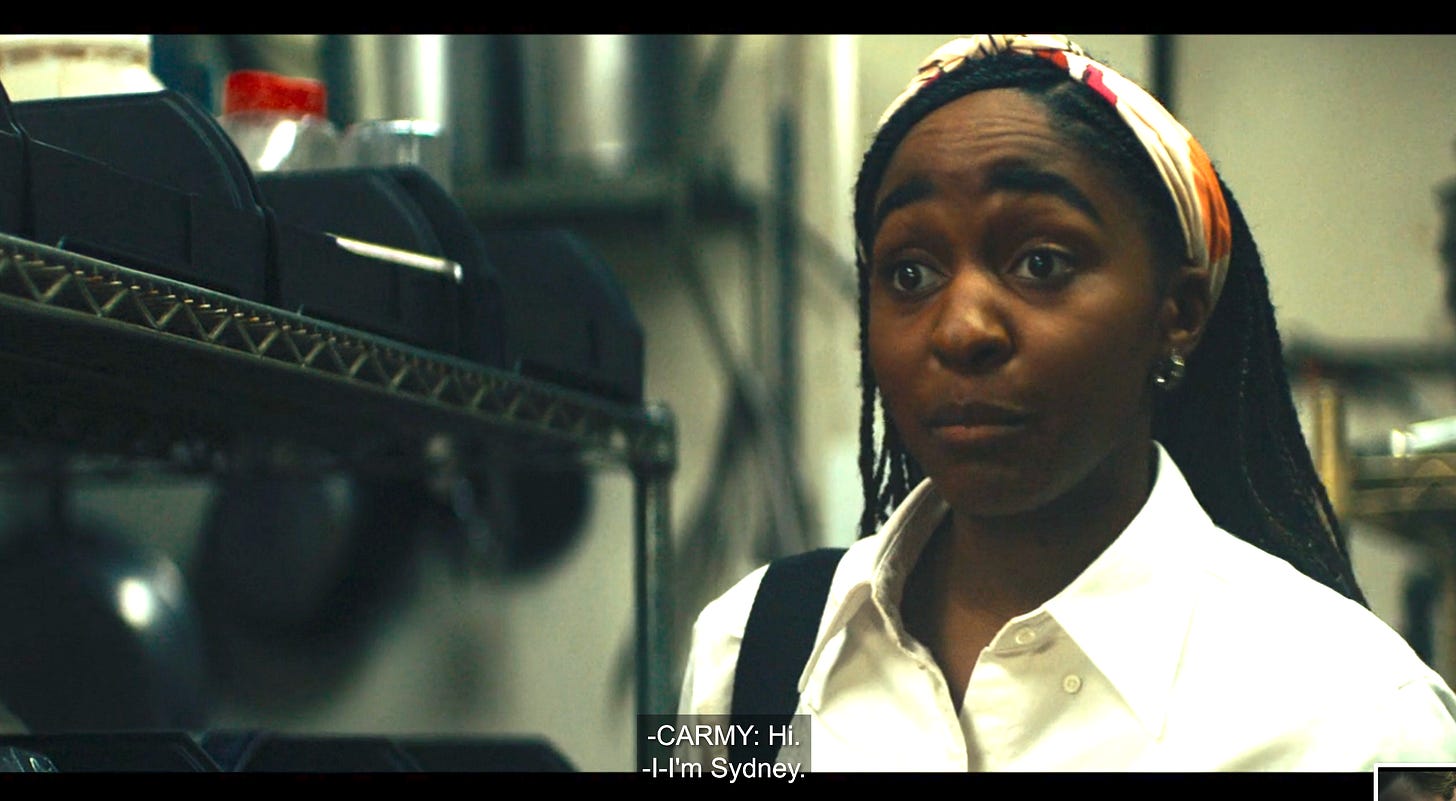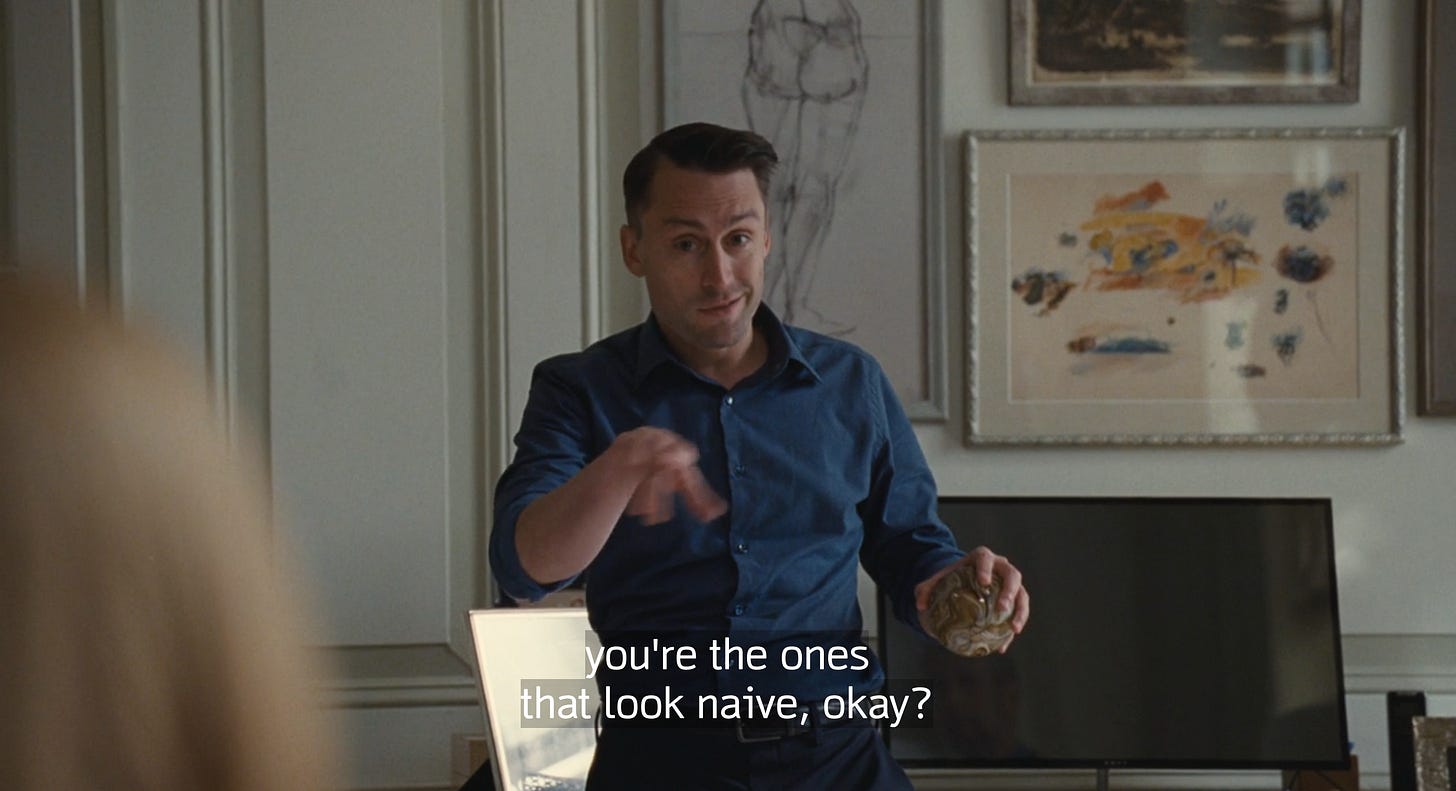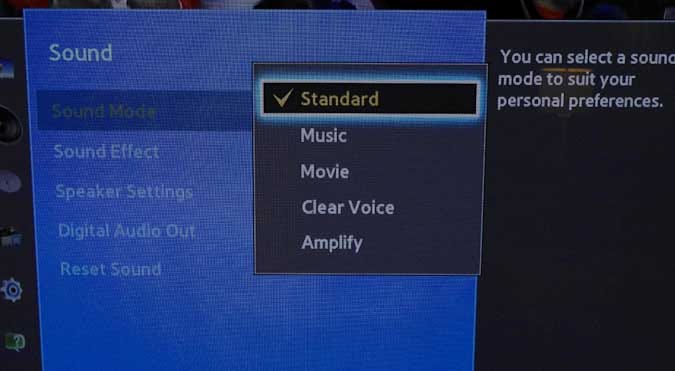Must-Read TV?
Why are we all watching shows with the subtitles on? A guide to fixing your TV's sound settings.
All right, hands up: How many of you turn on the subtitles when you watch TV these days?
Oof. That’s a lot of hands.
Do you do it because you want to or do you do it because you have to? I thought so; same here. My wife and I try with every new show or movie we dial up on demand to do the right thing and process a filmed entertainment with our ears as well as our eyes, the way the Good Lord and decades of sound editors intended. And nine times out of ten, we cave after ten minutes and toggle the subtitles on.
Nor are we alone. An informal Vox magazine poll last year found that well over 50% of respondents regularly resort to using subtitles when watching TV, and those numbers are borne out in other reporting and anecdotally. It just seems that that’s how we take in televised entertainment in the 21st century.
But it’s wrong. And it has nothing to do with our age (or not much) or the British accents of all those Britbox and PBS shows some of us are addicted to (ditto) — in fact, Millennials and Gen Z viewers use subtitles on average more than Boomers do, perhaps because they’re used to shifting their attention between multiple feeds and anything that helps with that is a plus. Instead, the problem comes down to three variables:
A) The dreadful state of audio mixing for TV.
B) The genuinely crappy quality of your TV’s built-in speakers.
C) The byzantine audio settings available through your TV’s menu.
Of these three, we are powerless to affect only A, but there are arguments that it’s at the root of the problem. The surge in the number of series and shows that has accompanied the streaming revolution has compressed the time available for post-production and exacerbated a problem that has existed since the movies left studio sound stages for location shooting. In the old days, you had one microphone, and it was usually on a boom over the actors’ heads. The reality today is that everyone is individually miked, which can increase ambient sound that competes with dialogue. Add to that a turn toward more “realistic” acting styles that results in mumbled dialogue if not recorded or mixed correctly. (Some filmmakers, like Christopher Nolan, actively embrace the muddiness: If you understood a quarter of what was said in “Tenet,” can you please clue the rest of us in?)
When it comes to readying a film for airing on television, the broad dynamic range that sounds great in a Dolby Atmos-equipped theater has to get smoodged into a narrower band to sound “good” coming out of your speakers, a “near-field mix” that can further bury vocals if not done correctly. Given TV’s smaller dynamic range, sound mixers adapting feature films can either turn up the explosions so you can hear the dialogue or turn down the dialogue so the explosions won’t sound distorted – guess which one they choose? This is the reason you’re constantly adjusting your volume whenever you watch a show.
But it’s not just movies that suffer. Shows like “The White Lotus,” “Succession,” and any other series with cinematic ambitions and attributes fall prey to TV’s more constricted aural palette. Making things harder for sound editors – who by all accounts strive for clear dialogue and are chagrined by what they hear coming out of the average Samsung speaker at the end of the day – are the different sound specs decreed by each streaming service. Because there are no industry-wide technical standards, we get Babel.
What to do? Look to the other two pieces of the puzzle: Your television’s sound system and the ways you can tweak it. It’s a sadly accepted fact that as TV’s have gotten lighter and thinner over the past few decades, sound has lagged far behind picture in terms of quality; there just isn’t any room for decent speakers like the foghorns we had in the old floor models of our childhoods. To add insult to injury, most TV speakers are placed in the back of the set, pointing toward the wall or the floor.
The response of the electronics industry has been, no surprise, a shrug of the shoulders and a directing of the consumer back to Best Buy to purchase a sound bar or a surround sound system, components which are now considered de rigeur for any new TV set. Which is sad, really – like buying a new car and being told that the engine is substandard by design and you’ll have to buy an outboard – but you can find a decent sound bar and woofer for $200, and that may (I say may) fix your subtitle issues.
But maybe not, at which point (or before which) you may need to dive into the teleological nightmare that is your television’s settings menu and start messing with the sound.
The names and menu arrangements change from manufacturer to manufacturer, but typically you want to dig down into the Sound section and look for something called “Sound Mode.” This allows you to switch between pre-set options like “Standard,” “Cinema,” “Sports, “Music,” and “Game.” My living room LG has an option called “Clear Voice III” that improves dialogue comprehension – but not enough to completely avoid breaking out the subtitles, especially if more than one person is talking.
Switch between modes while listening to the same show – which option sounds better? If you’re feeling frisky, burrow into the equalizer setting, and try lowering the bass frequencies (100Hz, 300Hz) and boosting the higher frequencies (10k, 12k). If your television has a setting for “dynamic compression” or “night mode,” turn it on and leave it on — in theory, this should lower the loud parts and boost the quiet parts. Again, which options sound better to you, have clearer dialogue, richer sound? You can always go back to the original settings by hitting the “reset” button.
You may not have these options depending on what kind of TV you own: My office Roku TV (manufactured by TCL) offers zilch in terms of sound controls, which is why I have a soundbar and sub-woofer. But even then I find I sometimes have to switch to subtitles if I want to understand what the characters are saying. The one solution that truly improves matters is a good pair of headphones, but that only works if your TV has a Bluetooth connection or a headphone jack or if you’re watching on your computer – and it doesn’t work at all if you’re watching with family or friends. Unfortunately, the lousy sound on our TVs isn’t our problem — nor should it be our problem — but good luck getting the electronics manufacturers or anyone in Hollywood to pay attention.
How about you? What’s your level of frustration with the sound coming out of your TV set, and what steps have you taken to address it?
Thoughts? Don’t hesitate to weigh in.
If you enjoyed this edition of Ty Burr’s Watch List, please feel free to pass it along to friends.
If you’re not a paying subscriber and would like to sign up for additional postings and to join the discussions — or just help underwrite this enterprise, for which the management would be very grateful — here’s how.






